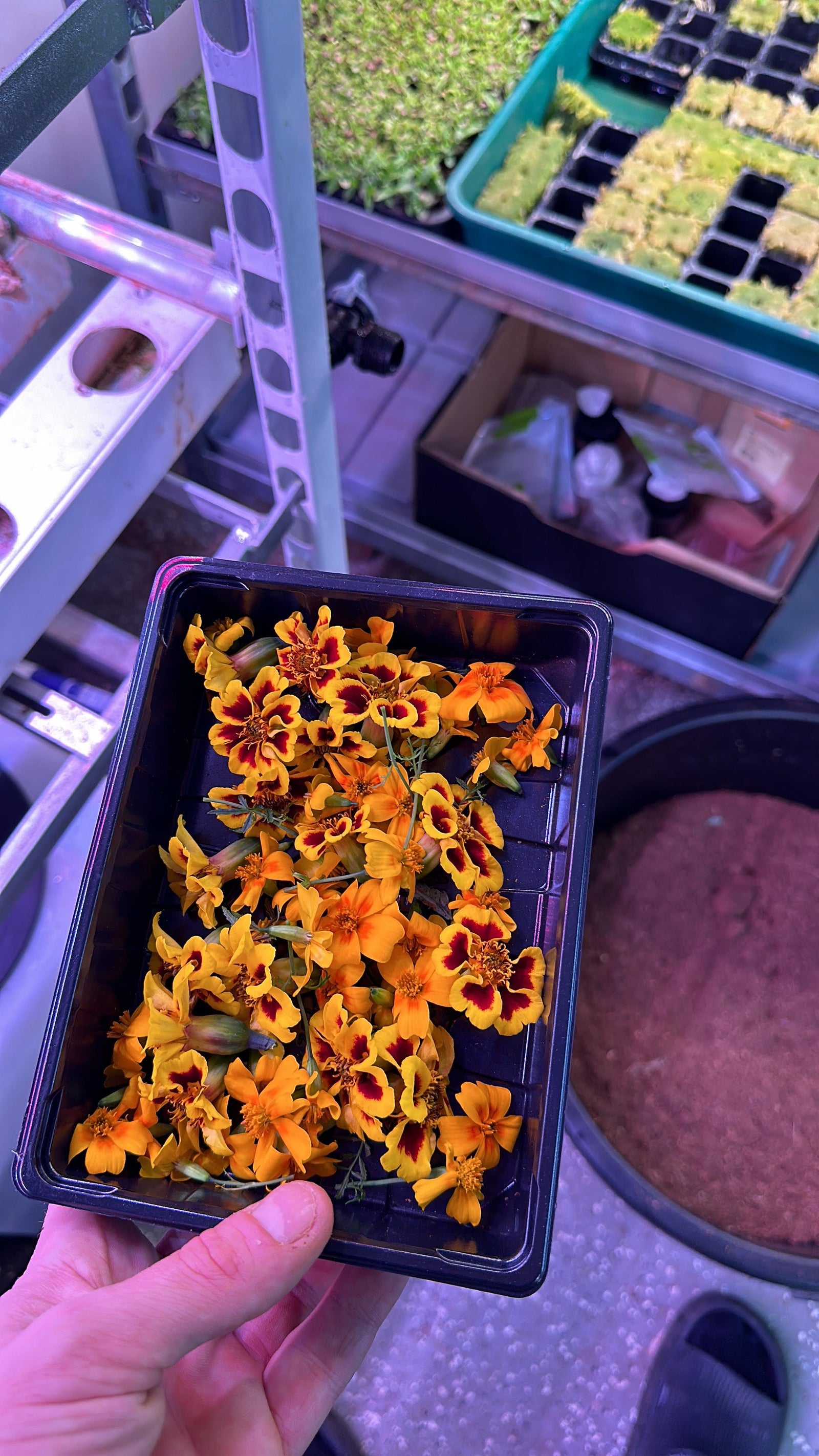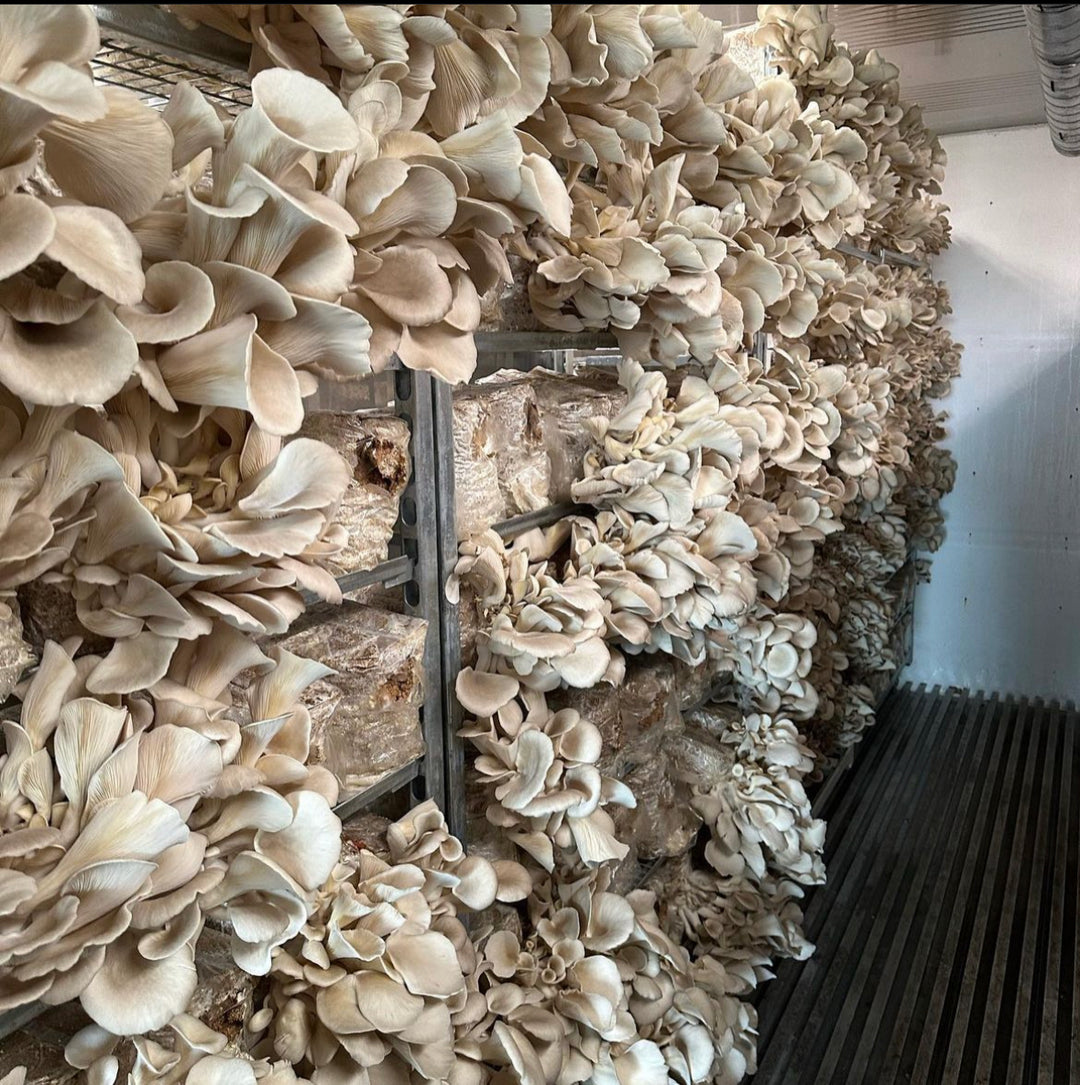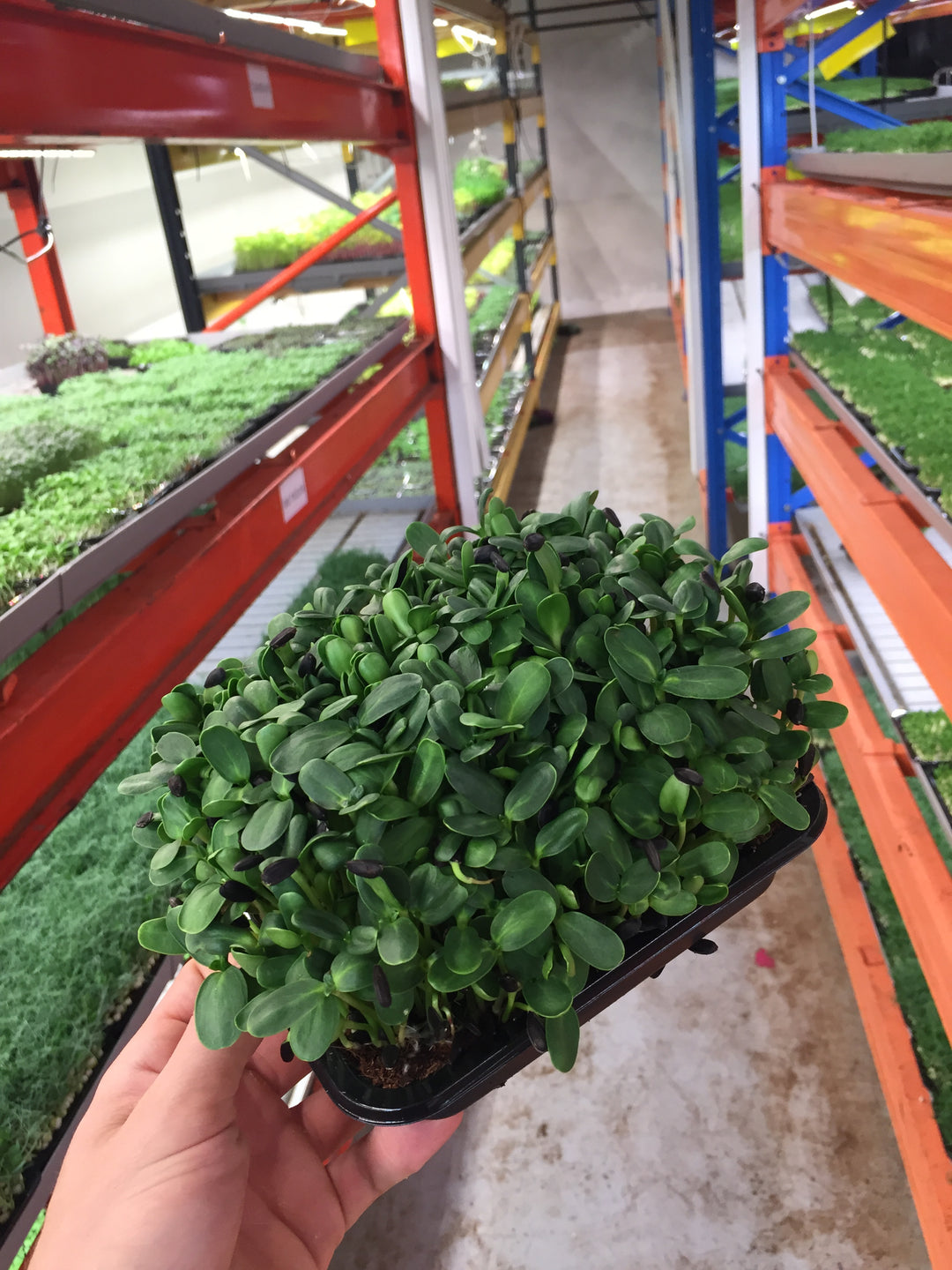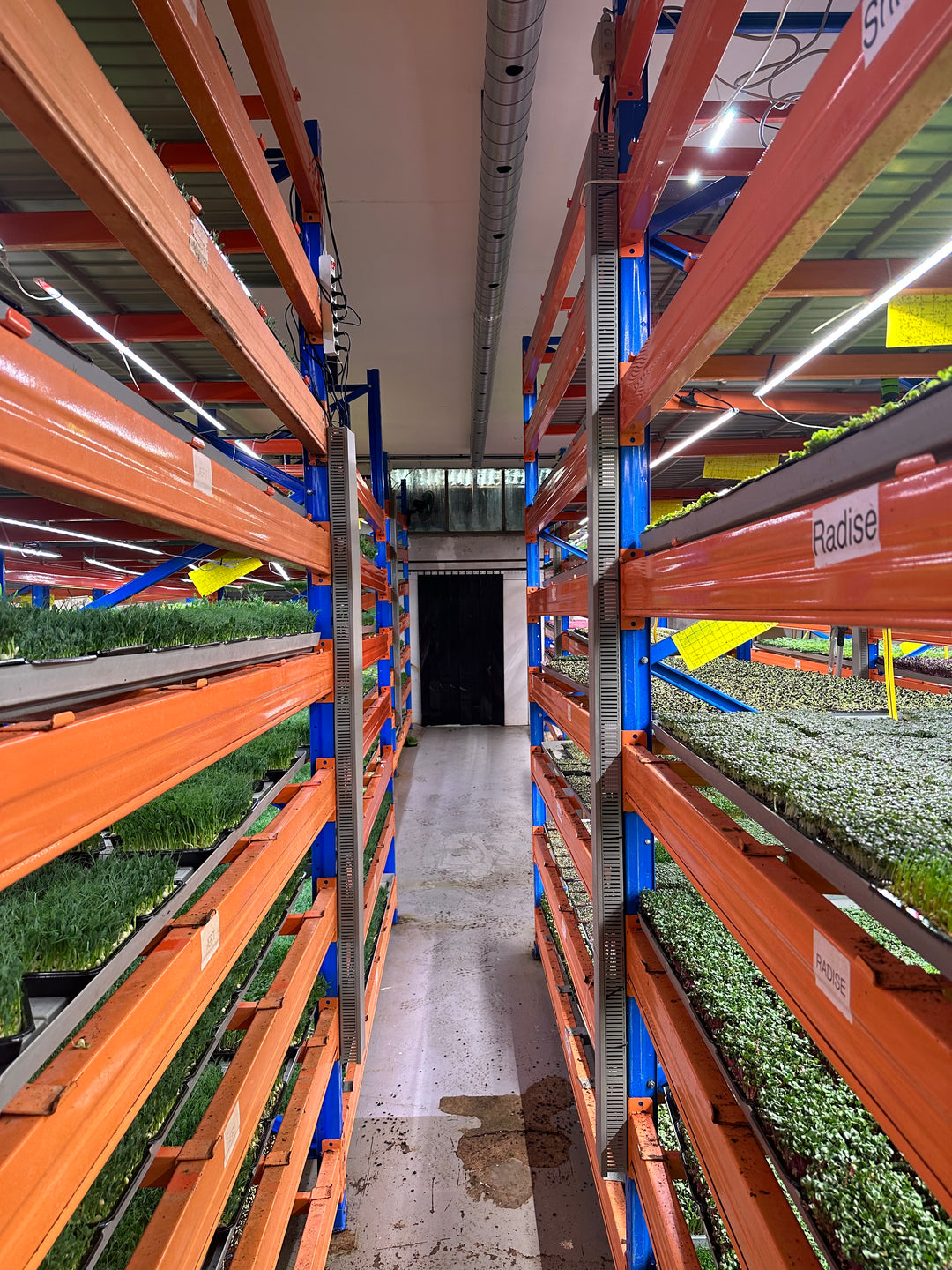Advantages of Growing Edible Flowers in a Vertical Farm

Edible flowers are a delightful and increasingly popular addition to culinary creations, elevating dishes with their vibrant colors, delicate flavors, and unique textures. From enhancing salads and beverages to garnishing desserts and soups, edible flowers are prized for their aesthetic and gastronomic appeal. However, growing these flowers traditionally can be challenging, as they often require specific growing conditions and space. This is where vertical farming comes in — offering a sustainable and efficient method for cultivating edible flowers in a controlled, space-efficient environment. In this post, we’ll explore the advantages of growing edible flowers in a vertical farm and why this farming method is becoming an increasingly popular choice for producers and
consumers alike.
1. Space Efficiency: Maximizing Limited Space
One of the most significant advantages of vertical farming is the ability to grow crops in a vertically stacked arrangement, which maximizes space usage. This is especially beneficial for growing edible flowers, many of which can be cultivated in compact, multi-layered growing systems. In traditional farming, edible flowers may require significant horizontal space, especially for plants like nasturtiums, pansies, and marigolds, which need adequate room to spread out. However, in vertical farming, these flowers can be grown in vertically stacked trays or towers, utilizing every inch of available space.
This makes vertical farming a particularly attractive solution for urban farming, where land is limited and expensive. By growing edible flowers vertically, farmers can produce high yields in a fraction of the space required by traditional farming, which is crucial in cities with limited arable land.
2. Water Conservation: Reducing Water Usage
Water scarcity is a growing concern worldwide, particularly in regions where agriculture is heavily reliant on water-intensive crops. Traditional farming methods typically waste large amounts of water through evaporation, runoff, and inefficient irrigation systems. Vertical farming, especially when combined with hydroponics or aeroponics, offers a more water-efficient alternative.
In hydroponics, plants grow with their roots submerged in a nutrient-rich water solution, while aeroponics involves misting the roots with nutrients. Both systems recirculate water, ensuring that water is reused rather than wasted. This is ideal for edible flowers, which can thrive in water-efficient systems. As a result, vertical farming can reduce water usage by up to 90% compared to traditional soil-based agriculture, making it a more sustainable option for growing delicate flowers like violets, calendulas, and borage.
3. Controlled Growing Conditions: Optimizing Flower Quality
Edible flowers are highly sensitive to their growing conditions. Temperature, humidity, light, and nutrient levels all play crucial roles in determining the quality and flavor of the flowers. Vertical farming allows farmers to control these environmental factors precisely, providing an optimal growing environment for each type of edible flower.
For example, some edible flowers, such as lavender and chamomile, may require cooler
temperatures, while others, like nasturtiums, thrive in warmer conditions. In a vertical farm, these conditions can be easily adjusted, ensuring that the flowers grow to their full potential. The ability to maintain consistent conditions year-round also means that farmers can produce high-quality edible flowers throughout the seasons, regardless of external weather fluctuations.
This level of control results in consistently superior quality flowers, which is crucial for culinary markets that demand high-quality, fresh products. In a controlled environment, the flowers are less likely to be affected by pests, diseases, or environmental stressors, which can often lead to poor-quality or damaged flowers in traditional outdoor farms.
4. Faster Growth and Year-Round Production
Unlike traditional outdoor farming, which is subject to seasonal limitations, vertical farming allows for year-round production of edible flowers. The controlled environment of a vertical farm enables farmers to grow flowers at optimal temperatures and light levels, ensuring that the growing process is not delayed by external weather conditions.
Many edible flowers have relatively short growth cycles. For example, nasturtiums can be ready for harvest in 30 to 45 days, and pansies may take as little as 60 days from sowing to flowering. By providing consistent lighting and nutrient supply in a vertical farming system, farmers can accelerate the growth process, leading to faster harvests and more frequent production cycles.
With year-round production, vertical farming provides a continuous supply of fresh edible flowers, allowing farmers to meet consumer demand consistently. This is especially important in the foodservice industry, where high-quality, fresh ingredients are needed throughout the year.
5. Reduced Use of Pesticides and Herbicides
One of the common challenges in growing edible flowers in outdoor fields is the risk of pest and disease infestations. Many edible flowers, such as pansies and marigolds, are vulnerable to insects like aphids, thrips, and whiteflies. In traditional farming, the use of pesticides and herbicides is often necessary to protect crops from these pests, but this poses risks to the environment and consumer health.
Vertical farming provides a more controlled environment, often indoors or in greenhouses, where pests can be more easily managed without the need for chemical interventions. Since vertical farms use closed systems, there is less exposure to pests, and integrated pest management techniques such as biological control (introducing natural predators) can be implemented more easily. This results in cleaner, pesticide-free flowers that are safer for consumption, which is particularly important for edible flowers that will be directly consumed by people.
6. Reduced Carbon Footprint and Localized Food Production
Transportation is a major contributor to the carbon footprint of food production, especially when crops are grown far from the consumers who will eat them. Edible flowers are often transported long distances, sometimes from other countries, which adds to their environmental impact. Vertical farming, however, allows for the cultivation of edible flowers in urban areas, close to the point of consumption.
By growing flowers locally in vertical farms, the distance they need to travel from farm to plate is drastically reduced. This not only decreases transportation emissions but also leads to fresher flowers reaching consumers faster. With vertical farming, edible flowers can be harvested, packaged, and sold in a fraction of the time it takes for traditional flowers to reach markets, ensuring that they are fresher and more vibrant.
For consumers, this means that they can enjoy locally grown, fresh edible flowers without the environmental cost of long-distance transportation. For the planet, it reduces the carbon footprint of flower production, helping to fight climate change.
7. Higher Yields and Less Food Waste
One of the most attractive aspects of vertical farming is its ability to produce high yields in a small amount of space. The use of stacked trays, hydroponics, and aeroponics allows for intensive farming, with many layers of flowers growing in a compact footprint. This means that vertical farms can produce more edible flowers per square meter than traditional soil-based farming.
Moreover, because vertical farms are often located closer to urban centers, the flowers can be harvested and delivered quickly, reducing the chances of spoilage and waste. In traditional farming, edible flowers can often spoil before they reach the market, especially if they need to travel long distances or are exposed to poor handling conditions. With vertical farming, flowers are harvested at their peak freshness, ensuring that consumers receive high-quality products with minimal waste.
8. Sustainability and Resource Efficiency
Vertical farms are often designed to be highly resource-efficient, utilizing renewable energy sources like solar power, and minimizing waste through recycling and composting. Water usage is significantly reduced compared to traditional farming methods, and the need for chemical inputs like fertilizers and pesticides is minimized.
In a vertical farm, edible flowers can be grown using organic methods in a way that is both sustainable and efficient. The controlled environment allows for precise nutrient management, ensuring that flowers receive exactly what they need to thrive without excess runoff or waste.
For consumers seeking sustainable food options, edible flowers grown in vertical farms represent an eco-friendly choice. By reducing the need for external inputs, minimizing water usage, and cutting down on transportation emissions, vertical farming aligns with the growing demand for environmentally responsible food production.
Conclusion
Growing edible flowers in a vertical farm offers numerous benefits, from space and water efficiency to reduced pesticide use and environmental impact. The ability to cultivate high-quality, fresh flowers year-round in a controlled environment makes vertical farming an ideal solution for meeting the growing demand for edible flowers in the culinary world.
With its potential to transform urban farming, improve sustainability, and provide consumers with fresh, locally grown ingredients, vertical farming is well-positioned to be at the forefront of the next generation of agriculture. Whether you are a chef looking to garnish your creations with vibrant, flavorful flowers, or a farmer exploring innovative ways to grow crops, vertical farming offers a promising and sustainable approach to edible flower production.


